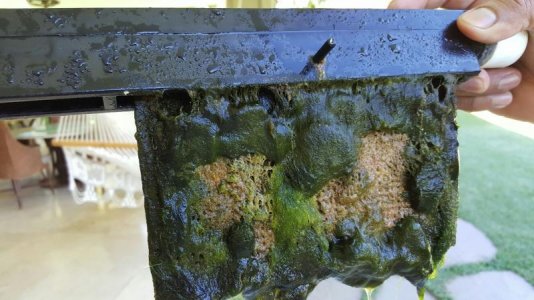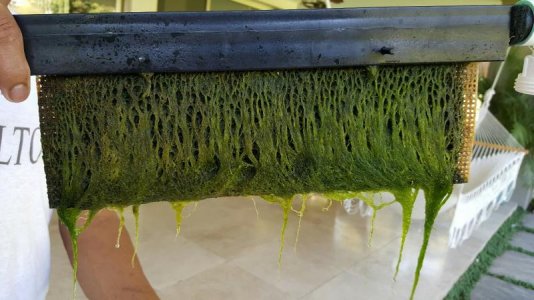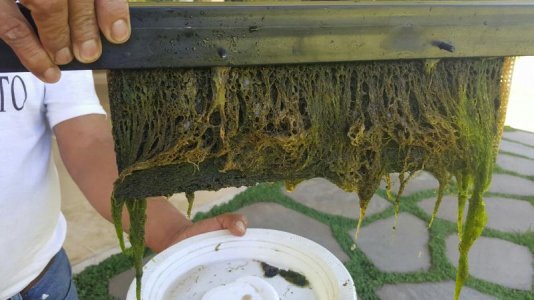Just googling "caribsea life rock algae problems" found this thread here
http://www.reefcentral.com/forums/showthread.php?t=2567850
Not saying it's the rock, but can't necessarily rule that out. Either way, that would be a phase IMO, any rock issues like that eventually burn out.
Speaking of burning it out, one of those "against the grain" ideas here (goes against normal advice) on rock that has algae issues it to actually hit it with more light, for longer. The idea being that it only has so much "fuel" embedded in it, and you either draw it out slow enough that it doesn't cause major issues, or you floor it and burn it all out as fast as possible. So, run the MH lights for long hours and just let the algae grow until it can't grow anymore because the fuel it all gone.
The other method is to draw it out slowly, and this does work, and is the route that most people take for in-tank "treatment" because it causes the least problems with corals etc.
The algae scrubber is going to have a bit of a tough time competing with tank algae on rock when the fuel for that algae is in the rocks. But it generally can't last forever.
This is where the "phosphate flow" theory comes into play. If you have the scrubber(s) running great and pulling the nutrient levels down in the water column, then your bacteria in the tank would "look" for other sources of phosphate, and they would find it in the rock. The theory (not 100% mine but I "subscribe" to it or parts of it) is the phosphate solublizing bacteria (PSBs) release the phosphate from the rock, and the algae and bacteria sort of work together so the algae grows as a result (that's the quick version). This can only go on until the source is drained.
This isn't limited to algae scrubbers. You can have the same effect by using a ton of GFO/etc and dropping water column phosphate out of availability.
You can get rid of phosphate in rock by curing it in a separate tub with no light, a skimmer, and GFO for a few months, let the bacteria get all the gunk out, to the dunking process, etc, the whole 9 yards, it's the same basic process.
The difference is that you have to do this in your tank, so you are going to get algae, most likely.
I think the thing here is that not everyone has algae problems with "dry rock" so the general opinion is that you don't need to cure it. What should be said is that "it's not necessary" to cure it. But that doesn't necessarily mean that it's going to be 100% problem free for everyone. I've heard lots of bad things about BRS tonga rock for instance, some have no issues, others have huge problems with phosphates. It seems CaribSea LifeRock is in the same boat.




